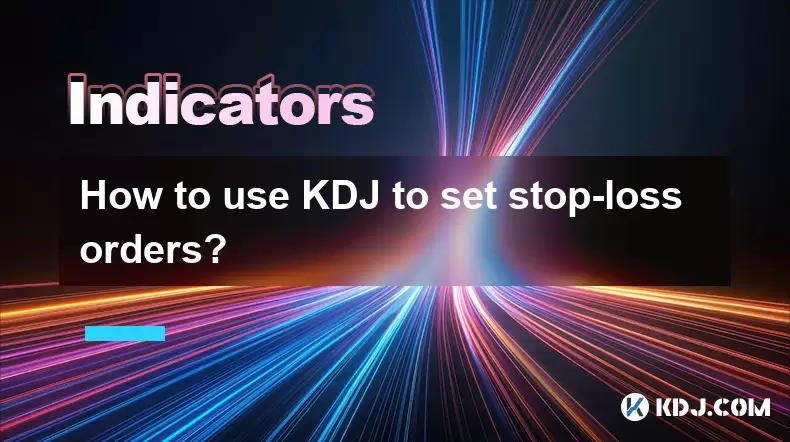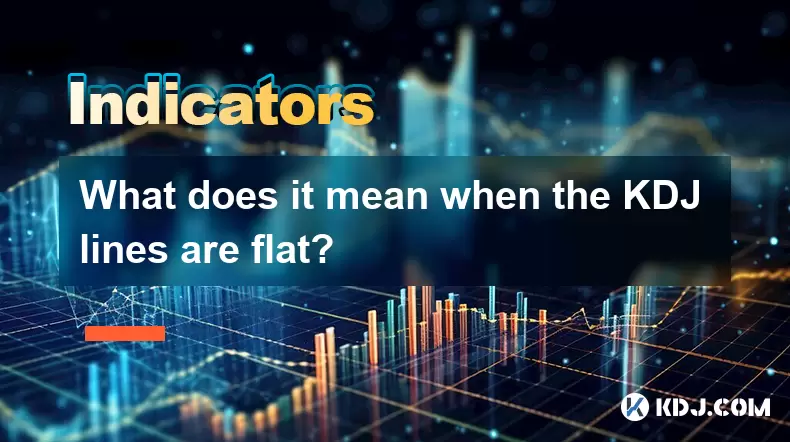-
 Bitcoin
Bitcoin $114700
-3.36% -
 Ethereum
Ethereum $3619
-6.51% -
 XRP
XRP $2.926
-7.66% -
 Tether USDt
Tether USDt $0.9998
-0.02% -
 BNB
BNB $768.6
-4.90% -
 Solana
Solana $168.2
-7.52% -
 USDC
USDC $0.9999
0.00% -
 Dogecoin
Dogecoin $0.2045
-9.02% -
 TRON
TRON $0.3243
-0.27% -
 Cardano
Cardano $0.7208
-8.45% -
 Hyperliquid
Hyperliquid $39.74
-9.17% -
 Stellar
Stellar $0.3882
-8.79% -
 Sui
Sui $3.481
-11.93% -
 Chainlink
Chainlink $16.52
-9.04% -
 Bitcoin Cash
Bitcoin Cash $556.7
-4.79% -
 Hedera
Hedera $0.2444
-11.40% -
 Avalanche
Avalanche $21.96
-8.51% -
 Ethena USDe
Ethena USDe $1.001
-0.02% -
 UNUS SED LEO
UNUS SED LEO $8.950
0.15% -
 Toncoin
Toncoin $3.425
-2.33% -
 Litecoin
Litecoin $104.4
-5.94% -
 Shiba Inu
Shiba Inu $0.00001212
-7.49% -
 Polkadot
Polkadot $3.630
-6.98% -
 Uniswap
Uniswap $9.165
-10.12% -
 Monero
Monero $306.8
-3.10% -
 Dai
Dai $0.9999
-0.01% -
 Bitget Token
Bitget Token $4.360
-3.43% -
 Pepe
Pepe $0.00001049
-9.59% -
 Cronos
Cronos $0.1352
-8.67% -
 Aave
Aave $256.5
-8.03%
What is a TRIX zero line crossover?
The TRIX indicator uses triple-smoothed EMA to filter noise, with zero line crossovers signaling bullish or bearish momentum shifts in crypto markets.
Jul 31, 2025 at 07:16 pm

Understanding the TRIX Indicator in Cryptocurrency Trading
The TRIX (Triple Exponential Average) indicator is a momentum oscillator used in technical analysis to identify trends and potential reversal points in cryptocurrency price movements. It is derived from a triple-smoothed exponential moving average (EMA), which helps filter out short-term volatility and noise common in crypto markets. By focusing on the rate of change of this smoothed average, TRIX provides insights into the strength and direction of price momentum. The resulting values oscillate around a zero line, making it easier to interpret bullish and bearish signals. The core calculation involves applying an EMA to the price data, then applying another EMA to that result, and finally a third EMA to generate the triple-smoothed line. The percentage rate of change of this final line forms the TRIX line.
What Is a TRIX Zero Line Crossover?
A TRIX zero line crossover occurs when the TRIX line moves from below the zero line to above it, or vice versa. This shift is interpreted as a signal of changing momentum in the market. When the TRIX line crosses above the zero line, it indicates that the triple-smoothed EMA is beginning to rise, suggesting increasing bullish momentum. Conversely, when the TRIX line crosses below the zero line, it signals that momentum is turning bearish. In the context of cryptocurrency trading, where volatility is high and trends can shift rapidly, these crossovers are closely watched by traders to time entries and exits. Because the TRIX indicator is smoothed multiple times, zero line crossovers tend to generate fewer false signals than simpler momentum indicators.
How to Identify a TRIX Zero Line Crossover on a Chart
To spot a TRIX zero line crossover, follow these steps on your trading platform:
- Open a cryptocurrency price chart (e.g., BTC/USDT or ETH/USD).
- Navigate to the indicators or studies section and search for “TRIX”.
- Apply the TRIX indicator to the chart; most platforms default to a 14-period setting.
- Observe the TRIX line plotted in a separate window below the price chart.
- Look for the point where the TRIX line intersects the horizontal zero line.
- A bullish crossover happens when the line moves from negative territory to positive.
- A bearish crossover occurs when the line moves from positive to negative.
Some platforms allow customization of the TRIX period. Shorter periods (e.g., 9) make the indicator more sensitive, while longer periods (e.g., 18 or 20) reduce noise but may lag. Confirm the crossover by ensuring the line fully crosses the zero line and sustains on the other side for at least one full candle closing period to avoid whipsaws.
Using TRIX Zero Line Crossovers for Trade Signals
Traders use TRIX zero line crossovers as part of a broader strategy to enter or exit cryptocurrency positions. For a long (buy) signal:
- Wait for the TRIX line to cross above the zero line.
- Confirm the crossover aligns with an uptrend on the price chart.
- Check for additional confirmation, such as rising volume or a breakout above key resistance.
- Enter a long position after the candle confirming the crossover closes.
For a short (sell) signal:
- Wait for the TRIX line to cross below the zero line.
- Ensure the price is in a downtrend or showing signs of reversal.
- Look for bearish confirmation, such as a breakdown below support or increasing selling volume.
- Initiate a short position after the confirmation candle closes.
It is crucial to avoid acting on crossovers during sideways or choppy markets, as false signals are more common. Combining TRIX with other tools like moving averages, RSI, or MACD enhances reliability.
Practical Example: TRIX Crossover in Bitcoin Trading
Imagine analyzing the BTC/USDT 4-hour chart. Over several days, Bitcoin consolidates in a range, and the TRIX line hovers near zero. Suddenly, Bitcoin breaks above resistance with strong volume. The TRIX line, which had been slightly negative, begins to rise and crosses above the zero line. This crossover confirms that momentum has shifted from neutral to bullish. A trader might interpret this as a signal to enter a long position. If, days later, Bitcoin fails to make higher highs and the TRIX line begins to decline, eventually crossing back below zero, this would suggest weakening momentum and a potential trend reversal. A trader could use this bearish crossover to exit the long position or initiate a short trade.
Common Pitfalls and How to Avoid Them
While TRIX zero line crossovers are useful, they are not infallible. One common mistake is acting on crossovers without confirming the broader market context. In highly volatile cryptocurrencies like meme coins, TRIX can generate misleading signals due to sudden spikes. Another pitfall is using too short a period, which increases sensitivity and leads to false crossovers. To mitigate risks:
- Use TRIX in conjunction with trend-following indicators like the 200-period EMA.
- Avoid trading crossovers during low-volume periods or major news events.
- Apply TRIX on multiple timeframes (e.g., daily and 4-hour) to confirm alignment.
- Set stop-loss orders to manage downside risk when entering based on a crossover.
Delayed signals are another issue—because TRIX is triple-smoothed, crossovers may occur after a trend has already begun. Traders should accept that TRIX is better suited for confirming trends than predicting them.
Frequently Asked Questions
What is the default period setting for the TRIX indicator?
The most commonly used default period for TRIX is 14. This setting balances responsiveness and smoothing, making it suitable for daily or 4-hour cryptocurrency charts. However, traders may adjust it based on their strategy—shorter periods for scalping, longer ones for swing trading.
Can TRIX zero line crossovers be used in sideways markets?
In sideways or ranging markets, TRIX frequently oscillates around the zero line, generating multiple crossovers. These are often false signals due to lack of directional momentum. It is advisable to avoid trading zero line crossovers in such conditions unless combined with range-bound strategies or volatility filters.
How does TRIX differ from MACD?
While both are momentum oscillators, TRIX uses a triple-smoothed EMA, making it less reactive to short-term price changes than MACD, which uses the difference between two EMAs. TRIX is designed to filter out more noise, making its zero line crossovers potentially more reliable in trending markets.
Is TRIX effective for all cryptocurrencies?
TRIX works best on highly liquid cryptocurrencies like Bitcoin and Ethereum, where price data is less prone to manipulation and sudden spikes. For low-cap altcoins with erratic price action, TRIX may produce unreliable crossovers due to excessive volatility.
Disclaimer:info@kdj.com
The information provided is not trading advice. kdj.com does not assume any responsibility for any investments made based on the information provided in this article. Cryptocurrencies are highly volatile and it is highly recommended that you invest with caution after thorough research!
If you believe that the content used on this website infringes your copyright, please contact us immediately (info@kdj.com) and we will delete it promptly.
- Australia vs Lions: Unleashing Betting Offers and Free Bets for the Thrilling Finale
- 2025-08-01 16:30:11
- Bitcoin, Satoshi, and the Echoes of Ancient Wisdom in DeFi
- 2025-08-01 16:50:12
- ONDO Tokens: Could They Mint the Next Crypto Millionaires?
- 2025-08-01 16:30:11
- Satoshi, Meme Coins, and Substance: A New Era?
- 2025-08-01 16:50:12
- Decoding the Roar: Australia, the Lions, and the Betting Odds
- 2025-08-01 16:55:48
- Bitcoin Price Plummets Amid Trump Tariffs: A Market Sell-Off Deep Dive
- 2025-08-01 16:55:48
Related knowledge

How do I secure my private key?
Aug 01,2025 at 05:14pm
Understanding the Importance of Private Key SecurityYour private key is the most critical component of your cryptocurrency ownership. It is a cryptogr...

How does the KDJ indicator apply to decentralized finance (DeFi) tokens?
Aug 01,2025 at 04:43pm
Understanding the KDJ Indicator in Technical AnalysisThe KDJ indicator is a momentum oscillator derived from the Stochastic Oscillator, widely used in...

What is the difference in KDJ signal interpretation between a trending and a ranging market?
Aug 01,2025 at 03:56pm
Understanding the KDJ Indicator in Cryptocurrency TradingThe KDJ indicator is a momentum oscillator widely used in cryptocurrency trading to identify ...

Does the KDJ indicator work well for low-liquidity crypto assets?
Aug 01,2025 at 02:01pm
Understanding the KDJ Indicator in Cryptocurrency TradingThe KDJ indicator is a momentum oscillator derived from the Stochastic Oscillator, widely use...

How to use KDJ to set stop-loss orders?
Aug 01,2025 at 04:28pm
Understanding the KDJ Indicator in Cryptocurrency TradingThe KDJ indicator is a momentum oscillator widely used in technical analysis within the crypt...

What does it mean when the KDJ lines are flat?
Aug 01,2025 at 03:22pm
Understanding the KDJ Indicator in Cryptocurrency TradingThe KDJ indicator is a momentum oscillator widely used in cryptocurrency technical analysis t...

How do I secure my private key?
Aug 01,2025 at 05:14pm
Understanding the Importance of Private Key SecurityYour private key is the most critical component of your cryptocurrency ownership. It is a cryptogr...

How does the KDJ indicator apply to decentralized finance (DeFi) tokens?
Aug 01,2025 at 04:43pm
Understanding the KDJ Indicator in Technical AnalysisThe KDJ indicator is a momentum oscillator derived from the Stochastic Oscillator, widely used in...

What is the difference in KDJ signal interpretation between a trending and a ranging market?
Aug 01,2025 at 03:56pm
Understanding the KDJ Indicator in Cryptocurrency TradingThe KDJ indicator is a momentum oscillator widely used in cryptocurrency trading to identify ...

Does the KDJ indicator work well for low-liquidity crypto assets?
Aug 01,2025 at 02:01pm
Understanding the KDJ Indicator in Cryptocurrency TradingThe KDJ indicator is a momentum oscillator derived from the Stochastic Oscillator, widely use...

How to use KDJ to set stop-loss orders?
Aug 01,2025 at 04:28pm
Understanding the KDJ Indicator in Cryptocurrency TradingThe KDJ indicator is a momentum oscillator widely used in technical analysis within the crypt...

What does it mean when the KDJ lines are flat?
Aug 01,2025 at 03:22pm
Understanding the KDJ Indicator in Cryptocurrency TradingThe KDJ indicator is a momentum oscillator widely used in cryptocurrency technical analysis t...
See all articles

























































































